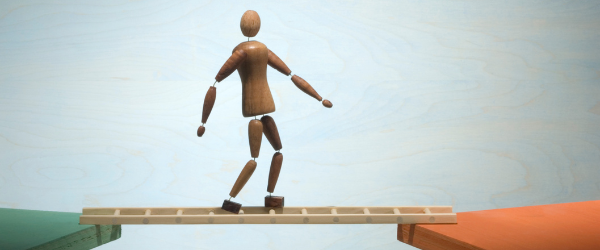Blog Post | How to Tackle Transitions
How to Tackle Transitions
Transitions are difficult for ADHD brains. What makes transitions so challenging? Let’s first explore three types of transitions.
- Physical Transitions include getting out of bed in the morning, getting out the door, and getting ready to start tasks in the day.
- Mental Transitions are more internal. It’s when we are switching tasks, we need to consider how we are thinking about the task. Is it challenging, or are we unsure how to start it? Executive functioning challenges impact how we shift from one activity to another.
- Emotional Transitions can impact transitions when we are sad, anxious, stressed, bored, or overwhelmed. Emotional regulation makes transitions difficult and they can cause us to get stuck.
The challenges I hear most often by my clients include:
- Going to bed too late
- Getting out of bed in the morning
- Starting the day
- Getting out of the house on time
- Task Switching
- Finishing work for the day (there’s one more thing I need to do)
The first step to working on a challenge is to identify what types of transitions are most problematic. Examine the obstacles and brainstorm strategies to use based on your strengths and what has worked successfully for you in the past. Be open to exploring and trying strategies. If you believe this will never work, or nothing ever works, your beliefs may be keeping you stuck. Then make a commitment to take the steps necessary to improve. Practice the new strategy for a few days and if it’s not working, discuss it with your coach, work through the challenges, and be open to exploring other approaches.
Going to Bed
One big obstacle I hear about from many of my clients relates to not getting enough sleep. When we are sleep-deprived it affects mood and cognitive functioning so it’s more difficult to get things done when we are tired. Being too tired makes it challenging to be productive. To get adequate sleep research shows that we need to reset our internal clock by going to bed and waking up at routine times. If this is an issue for you, consider establishing routines prior to getting into bed, keep your bedroom dark, at a comfortable temperature, and keep the stimulation low. That includes stimulation from your phone/digital devices and emotional conflict. Having an argument before bed can keep the brain agitated and active, making it difficult to fall asleep.
Getting Out of Bed in the Morning
Set the alarm to wake up at approximately the same time each day. If something is getting in the way of you getting out of bed, what is it? Name the challenges. If there is something you do when you wake up that is a time waster, identify what it is. Is it a bad habit you have acquired? Another strategy might be, if you are taking meds, to discuss taking meds earlier in the morning with your doctor.
Starting the Day
Get into a routine in starting your day. What do you need? A cup of coffee? How much time do you have in the morning and how can you best utilize the time you have? It might be exercising, writing, doing yoga, playing music, or doing a morning meditation. Ask yourself, what is my intention for the day? How do I want this day to flow? It would help to create a schedule of routines and tasks you need to complete, and identify 3 priorities for the day. Keep that schedule close to you to view throughout the day.
Getting Out of the House
Consider getting out of the house earlier if you are consistently running late in the morning. Set an alarm to remind you that you need to get out the door. Also, put what you need near the front door either early in the morning or the night before. If you are like many who are time blind and do not have a sense of time passing, keep clocks in every room and consider wearing a watch.
Task Switching
Now you have identified your 3 priorities. Work on those priorities when you have the most time and energy in your day. Estimate how much time the tasks will take. Block out the time on your calendar. Minimize distractions and try the Pomodoro Method of working on a task for 30-40 minutes, set a timer, and take a 3-5 minute break. That will give your brain some time to think about whether you need to continue working on that task or start another one. I am a big fan of taking mindfulness breaks throughout the day to stop, pause, change your environment, take some deep breaths and reset. Pausing is also useful when you are feeling stuck, emotionally triggered by someone or something, or when you need time to think and de-stress.
Ending the Work Day
As you create the daily schedule, consider what time you want to end the day. There may be a few other things you need to take care of before you finish the workday. Consider asking what can I leave until tomorrow? Also, consider what ritual you could incorporate at the end of the day to help you have closure with the day. Is it turning on music, starting to cook, taking a walk, or something that is enjoyable to you? It’s your personal time and you deserve to relax, enjoy the evening and recharge for tomorrow.

Victoria Roche, MSW, PCC
ADHD Coach | Center For Living Well with ADHD, LLC

